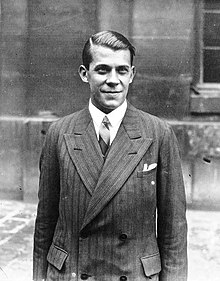
BBC Radio 4 is a British national radio station owned and operated by the BBC. The station replaced the BBC Home Service on 30 September 1967 and broadcasts a wide variety of spoken-word programmes from the BBC's headquarters at Broadcasting House, London. Since 2019, the station controller has been Mohit Bakaya. He replaced Gwyneth Williams, who had been the station controller since 2010.

It is generally recognized that the first radio transmission was made from a temporary station set up by Guglielmo Marconi in 1895 on the Isle of Wight. This followed on from pioneering work in the field by a number of people including Alessandro Volta, André-Marie Ampère, Georg Ohm, James Clerk Maxwell and Heinrich Rudolf Hertz.

Mediacorp Pte. Ltd. is the state-owned public media conglomerate of Singapore. Owned by Temasek Holdings—the investment arm of the Government of Singapore—it owns and operates television channels, radio, and digital media properties. It is headquartered at the Mediapolis development in Queenstown's One-north precinct, which succeeded Caldecott Hill—the long-time home of its predecessors—in 2015; as of 2022, Mediacorp employs over 3,000 employees; a large number of them are in both public and private sector broadcasting.
WHRB is a commercial FM radio station in Cambridge, Massachusetts. It broadcasts at 95.3 MHz and is operated by students at Harvard College. The station is owned by Harvard Radio Broadcasting Co., Inc., a non-profit corporation independent of Harvard University.
Vatican Radio is the official broadcasting service of Vatican City.
Shortwave broadcasting in the United States allows private ownership of commercial and non-commercial shortwave stations that are not relays of existing AM/MW or FM radio stations, as are common in Africa, Europe, Asia, Oceania except Australia and Latin America. In addition to private broadcasters, the United States also has government broadcasters and relay stations for international public broadcasters. Most privately owned shortwave stations have been religious broadcasters, either wholly owned and programmed by Roman Catholic and evangelical Protestant charities or offering brokered programming consisting primarily of religious broadcasters. To better reach other continents of the world, several stations are located in far-flung US territories. Shortwave stations in the US are not permitted to operate exclusively for a domestic audience; they are subject to antenna and power requirements to reach an international audience.

The Blue Network was the on-air name of a now defunct American radio network, which broadcast from 1927 through 1945.

Kol Yisrael or Kol Israel was Israel's public domestic and international radio service. It operated as a division of the Israel Broadcasting Service from 1951 to 1965, the Israel Broadcasting Authority from 1965 to 2017, and the radio stations it used to administer are currently administered by the Israeli Broadcasting Corporation.

The BBC Regional Programme was a radio service which was on the air from 9 March 1930 – replacing a number of earlier BBC local stations between 1922 and 1924 – until 1 September 1939 when it was subsumed into the BBC Home Service, two days before the outbreak of World War II.

The BBC Forces Programme was a national radio station which operated from 7 January 1940 until 26 February 1944.

The mass media in Ethiopia consist of radio, television and the Internet, which remain under the control of the Ethiopian government, as well as private newspapers and magazines. Ten radio broadcast stations, eight AM and two shortwave, are licensed to operate in Ethiopia. The major radio broadcasting stations include Radio Fana a private station, Radio Voice of One Free Ethiopia, and the Voice of the Revolution of Tigray. The only terrestrial (broadcast) television networks are government owned and include EBC and other regional stations. In keeping with government policy, radio broadcasts occur in a variety of languages including Amharic, Afaan Oromo, Tigrigna, and more. There are also many video sharing websites which are a popular way of getting information as well as entertainment in Ethiopia.

WGTK is a commercial AM radio station in Louisville, Kentucky. It is owned by the Word Media Group with the license held by the Word Broadcasting Network, Inc. It airs a conservative talk radio format, calling itself "970 The Answer", similar to many talk stations carrying the Salem Radio Network. Its studios and offices are on Corporate Campus Drive in Louisville.

BBC Arabic consisted of the Literary Arabic language radio station which was run by the BBC World Service, as well as the BBC's satellite TV channel, and the website that serves as an Literary Arabic language news portal and provides online access to both the TV and radio broadcasts.
The year 1931 saw a number of significant events in radio broadcasting history.
Radio Luxembourg was a multilingual commercial broadcaster in Luxembourg. It is known in most non-English languages as RTL.
The year 1971 in radio involved some significant events.
Radio Londres was a radio station broadcast from 1940 to 1944 by the BBC in London to Nazi-occupied France. It was entirely in French and was operated by the Free French who had escaped from occupied France. It served not only to counter the propaganda broadcasts of German-controlled Radio Paris and the Vichy government's Radiodiffusion Nationale, but also to appeal to the French to rise up, as well as being used to send coded messages to the French Resistance.
Voice of the Arabs or Sawt al-Arab was one of the first and most prominent Egyptian transnational Arabic-language radio services. Based in Cairo, the service became known to many Arabs and non-alike, as the main medium through which former Egyptian president Gamal Abdel Nasser spread his messages on Arab unity and revolutions across the Arab world. Despite its unmatched popularity in most of the 1950s and 1960s, the service no longer commands a large audience and does not play a significant role in domestic Egyptian or regional politics.
PCJJ was a pioneering shortwave radio station in the Netherlands operated by Philips Radio on behalf of Philips Laboratories, a division of Philips Electronics. It was the first shortwave radio station in Europe, and the first dedicated shortwave radio station in the world - previous stations had simulcast AM/medium wave broadcasts.
This is a list of events from British radio in 1940.









